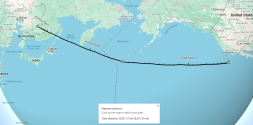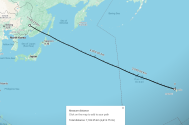How achievable is a range of say 25000km or more for the WZ-X?
If such a range is true, then we're not just talking about a 2IC plane, not even a 3IC plane, but a plane designed to operate across the entire Pacific Ocean.
At that point, it wouldn't just be DF-17 or DF-27 strikes near the second island chain, but possibly guiding a DF-3X across the Pacific Ocean toward areas near the US west coast.
View attachment 154986
View attachment 154987
Technically not out of the question, but practically speaking in terms of requirements for mission endurance (loitering on station), and the need to have a relatively sanitized/degraded opfor flight path to travel across the pacific, such a mission profile is probably unlikely.
The role of a low profile, long range and long endurance aircraft, imo isn't mostly to provide
short periods of BDA or recce -- instead, it is being able to provide a
long period/persistent and low profile/low signature recce system able to cover large areas of ocean to search for CSGs at 2IC distances, as well as to provide persistent ISR/BDA over various 2IC distance islands. Having a persistent sensor over areas of the globe to supplement satellite ISR coverage which is may be less consistent and less "real time" means a much more robust sensor web against mobile targets like CSGs, or time sensitive ISR like BDA of islands.
Missions across the pacific would not have much time on station for a UAV like this and you're better off just using satellites (unless they're all shot down, in which case you might have to resort to using a long range UAV... unless your lost satellites include loss of SATCOM too)


